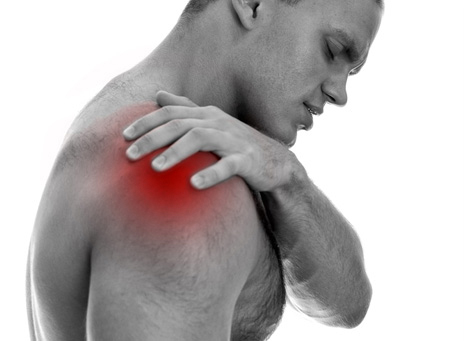
The rotator cuff injury or tear is a common shoulder injury which usually happens over time if same arm motion is repeated over and over or you fall on your arm or lift something heavy.
Rotator cuff is a group of four muscles and tendons that surround the shoulder joint, providing strength and stability and let you lift and rotate your arms.
When the rotator cuff is injured or damaged, it can lead to pain and loss of motion which either can be partial tear or can be a complete tear which means that it can range from mild to severe.
As the name suggests, the rotator cuff muscles are responsible for shoulder rotation and provide a supportive cuff around the joint.
SYMPTOMS
Rotator cuff injury can vary from microscopic tears to large irreparable tears and has its own specific symptoms and signs which can include-
Feel pain when your arm is at shoulder height or when your move your arm in certain ways or lie on it.
Feel pain in shoulder from top to your elbow.
Feel pain in shoulder while lying on your sore shoulder.
Feel pain in shoulder at rest (in more severe rotator cuff injuries).
Feel weakness or pain in shoulder when attempting to reach or lift.
Feel shoulder pain when putting your hand behind your back or head.
Have trouble raising your arm or feel weakness in your shoulder
See your doctor if you have any of these signs. If you don’t do anything about a torn rotator cuff, you can have more serious problems over time. Injury can even end up with a frozen shoulder or arthritis which is harder to treat.
DIAGNOSIS
The diagnosis can come from:
History and physical examination: In this doctor will start with a history of the injury and a physical examination of the shoulder. It will help the doctor to identify pain that may be coming from places other than the shoulder, such as the neck or even the heart.
X-rays: It is to see if the top of your arm bone is pushing into your rotator cuff space. X-rays are helpful to look for calcifications, arthritis or bone problems that can cause rotator cuff tears.
MRI: It can be used to make detailed pictures of your shoulder; it looks for tears or inflammation of tissues and to help determine the size and character of the tear to recommend proper treatment.
Ultrasound: It is to see the soft tissues (tendons and muscles and the bursas) in your shoulder.
TREATMENT
Treatment of rotator cuff injury is likely to start with a combination of physical therapy to make your shoulder muscles stronger, followed by a full rehabilitation program consisting of stretching, mobility, strengthening and sports specific exercises.
Common treatment options may include:
Physical therapy: This may help improve mobility, restore flexibility and strengthen shoulder muscles.
Anti-inflammatory medications and injections: These are used for pain relief and to de-crease inflammation.
REHABILITATION AT SOS PHYSIO
At SOS PHYSIO your treatment in physical therapy will include Manual therapy
& Active Release Techniques (ART) which are a critical part of the recovery which can last from three to 12 months. A coordinated effort between the patient, surgeon and physical or occupational therapist is required. We at SOS PHYSIO ensure that we give our patients the highest quality of care, effective treatment and a rapid rehabilitation program.